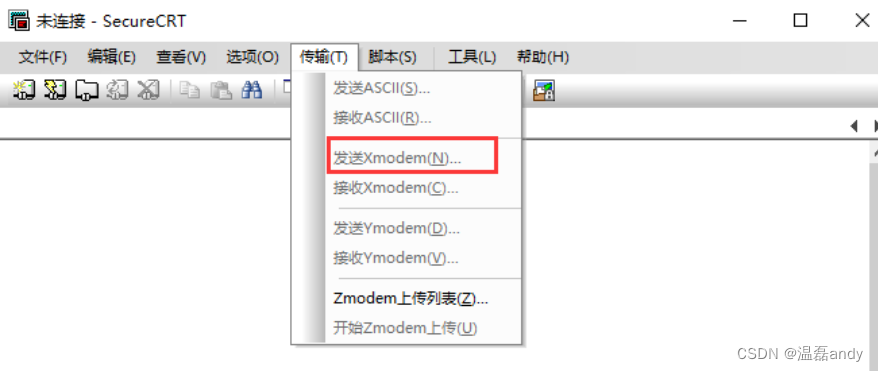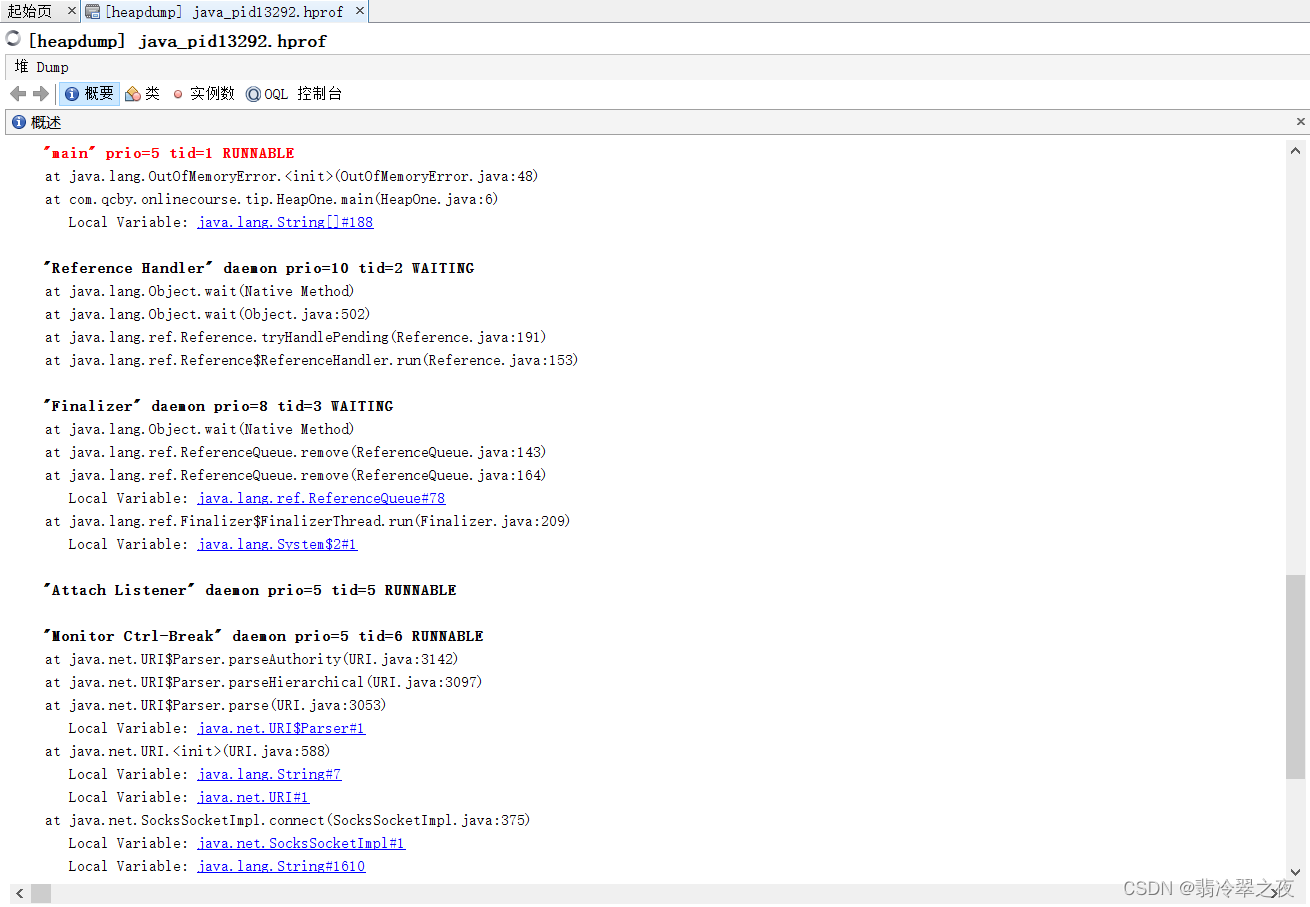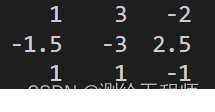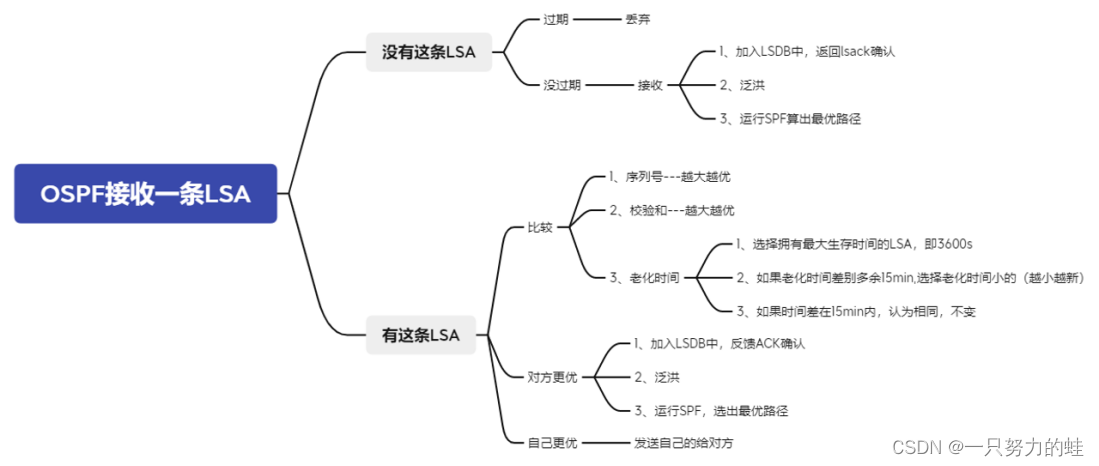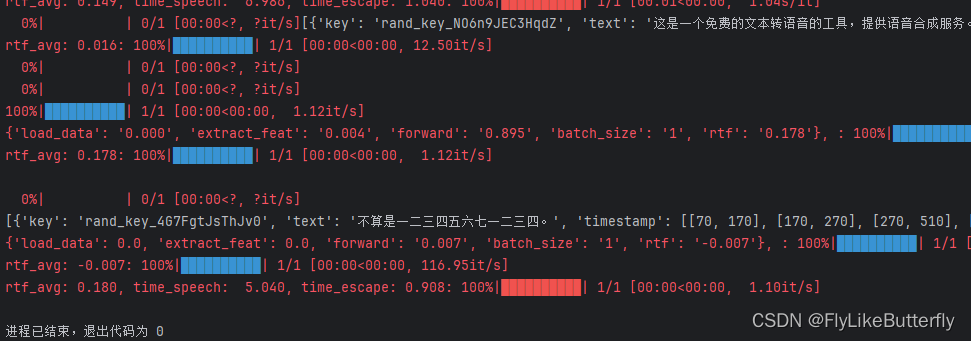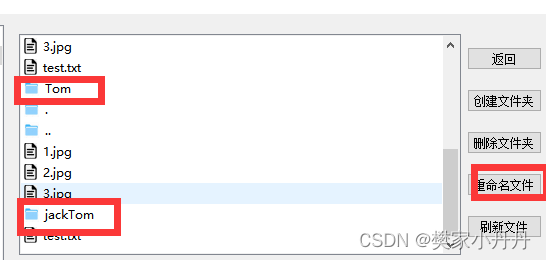项目场景:
在电商、支付等领域,往往会有这样的场景,用户下单后放弃支付了,那这笔订单会在指定的时间段后进行关闭操作,细心的你一定发现了像某宝、某东都有这样的逻辑,而且时间很准确,误差在1s内;那他们是怎么实现的呢?
一般实现的方法有几种:使用 redisson、rocketmq、rabbitmq等消息队列的延时投递功能。
解决方案:
一般项目集成redis的比较多,所以我这篇文章就说下redisson延迟队列,如果使用rocketmq或rabbitmq需要额外集成中间件,比较麻烦一点。
1.集成redisson
maven依赖
<dependency>
<groupId>org.redisson</groupId>
<artifactId>redisson-spring-boot-starter</artifactId>
<version>3.21.1</version>
</dependency>yml配置,单节点配置可以兼容redis的配置方式
# redis配置
spring:
redis:
database: 0
host: 127.0.0.1
password: redis@pass
port: 6001更详细的配置参考:Spring Boot整合Redisson的两种方式-CSDN博客
2.配置多线程
因为延迟队列可能会多个任务同时执行,所以需要多线程处理。
import org.springframework.context.annotation.Bean;
import org.springframework.context.annotation.Configuration;
import org.springframework.scheduling.annotation.EnableAsync;
import org.springframework.scheduling.concurrent.ThreadPoolTaskExecutor;
import java.util.concurrent.ThreadPoolExecutor;
@Configuration
@EnableAsync
public class ExecutorConfig {
/**
* 异步任务自定义线程池
*/
@Bean(name = "taskExecutor")
public ThreadPoolTaskExecutor asyncServiceExecutor() {
ThreadPoolTaskExecutor executor = new ThreadPoolTaskExecutor();
//配置核心线程数
executor.setCorePoolSize(50);
//配置最大线程数
executor.setMaxPoolSize(500);
//配置队列大小
executor.setQueueCapacity(300);
//允许线程空闲时间
executor.setKeepAliveSeconds(60);
//配置线程池中的线程的名称前缀
executor.setThreadNamePrefix("taskExecutor-");
// rejection-policy:当pool已经达到max size的时候,如何处理新任务
// CALLER_RUNS:不在新线程中执行任务,而是有调用者所在的线程来执行
executor.setRejectedExecutionHandler(new ThreadPoolExecutor.CallerRunsPolicy());
//调用shutdown()方法时等待所有的任务完成后再关闭
executor.setWaitForTasksToCompleteOnShutdown(true);
//等待所有任务完成后的最大等待时间
executor.setAwaitTerminationSeconds(60);
return executor;
}
}3.具体业务
比如消息通知、关闭订单等 ,这里加上了@Async注解,可以异步执行
import org.springframework.scheduling.annotation.Async;
import org.springframework.stereotype.Service;
import java.text.SimpleDateFormat;
import java.util.Date;
@Service
public class AsyncService {
@Async
public void executeQueue(Object value) {
System.out.println();
System.out.println("当前线程:"+Thread.currentThread().getName());
System.out.println("执行任务:"+value);
//打印时间方便查看
SimpleDateFormat sdf = new SimpleDateFormat("yyyy-MM-dd HH:mm:ss");
System.out.println("执行任务的时间:"+sdf.format(new Date()));
//自己的业务逻辑,可以根据id发送通知消息等
//......
}
}4.延迟队列(关键代码)
这里包括添加延迟队列,和消费延迟队列,@PostConstruct注解的意思是服务启动加载一次,参考Spring Boot中多个PostConstruct注解执行顺序控制_多个postconstruct执行顺序-CSDN博客
import org.redisson.api.RBlockingQueue;
import org.redisson.api.RDelayedQueue;
import org.redisson.api.RedissonClient;
import org.springframework.beans.factory.annotation.Autowired;
import org.springframework.scheduling.concurrent.ThreadPoolTaskExecutor;
import org.springframework.stereotype.Service;
import javax.annotation.PostConstruct;
import javax.annotation.Resource;
import java.text.SimpleDateFormat;
import java.util.Date;
import java.util.concurrent.TimeUnit;
@Service
public class TestService {
@Resource
private AsyncService asyncService;
@Resource
private ThreadPoolTaskExecutor executor;
@Autowired
private RedissonClient redissonClient;
/**
* 添加延迟任务
*/
public void addQueue() {
//获取延迟队列
RBlockingQueue<Object> blockingQueue = redissonClient.getBlockingQueue("delayedQueue");
RDelayedQueue<Object> delayedQueue = redissonClient.getDelayedQueue(blockingQueue);
for (int i = 1; i <= 10; i++) {
long delayTime = 5+i; //延迟时间(秒)
// long delayTime = 5; //这里时间统一,可以测试并发执行
delayedQueue.offer("延迟任务"+i, delayTime, TimeUnit.SECONDS);
}
//打印时间方便查看
SimpleDateFormat sdf = new SimpleDateFormat("yyyy-MM-dd HH:mm:ss");
System.out.println("添加任务的时间:"+sdf.format(new Date()));
}
/**
* 服务启动时加载,开始消费延迟队列
*/
@PostConstruct
public void consumer() {
System.out.println("服务启动时加载>>>>>>");
//获取延迟队列
RBlockingQueue<Object> delayedQueue = redissonClient.getBlockingQueue("delayedQueue");
//启用一个线程来消费这个延迟队列
executor.execute(() ->{
while (true){
try {
// System.out.println("while中的线程:"+Thread.currentThread().getName());
//获取延迟队列中的任务
Object value = delayedQueue.poll();
if(value == null){
//如果没有任务就休眠1秒,休眠时间根据业务自己定义
Thread.sleep(1000); //这里休眠时间越短,误差就越小
continue;
}
//异步处理延迟队列中的消息
asyncService.executeQueue(value);
} catch (Exception e) {
e.printStackTrace();
}
}
});
}
}5.测试接口
import com.test.service.TestService;
import org.springframework.beans.factory.annotation.Autowired;
import org.springframework.web.bind.annotation.GetMapping;
import org.springframework.web.bind.annotation.RequestMapping;
import org.springframework.web.bind.annotation.RestController;
@RestController
@RequestMapping("/test")
public class TestController {
@Autowired
private TestService testService;
/*
* 添加延迟任务
*/
@GetMapping(value = "/addQueue")
public String addQueue() {
testService.addQueue();
return "success";
}
}6.测试结果
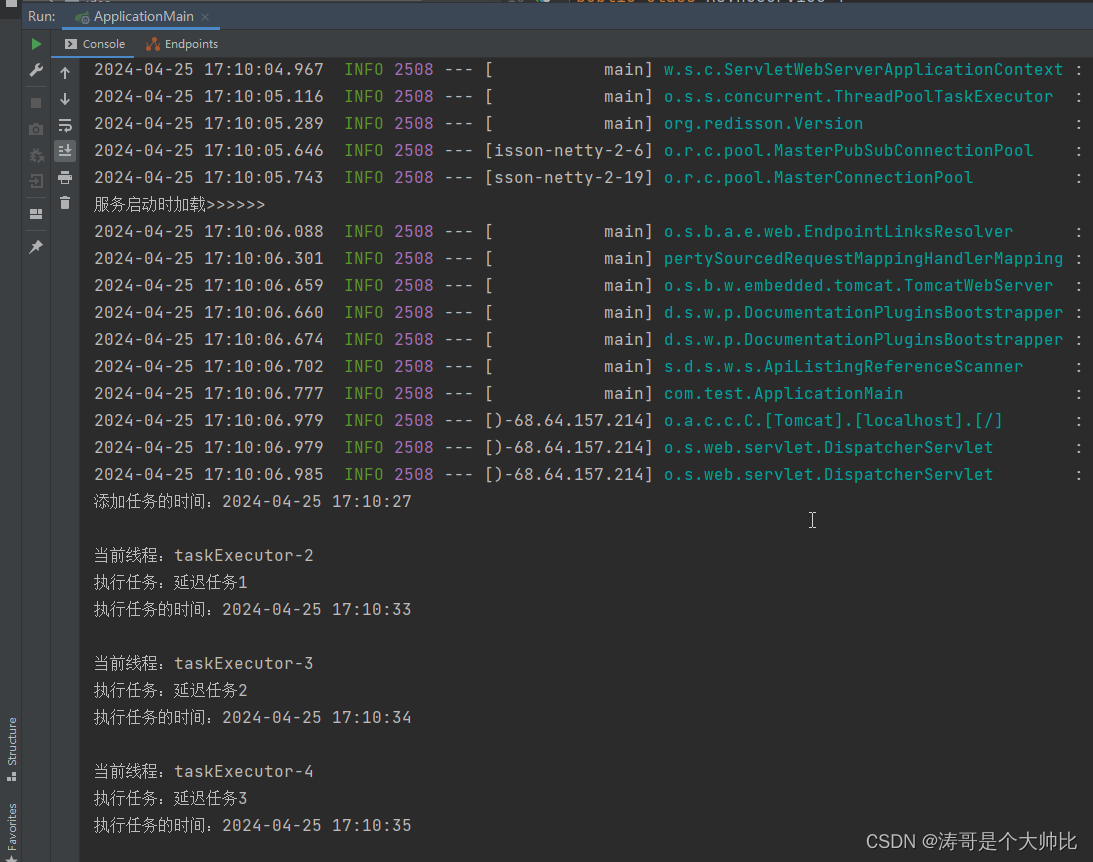
总结:
- Redisson的的RDelayedQueue是基于Redis实现的,而Redis本身并不保证数据的持久性。如果Redis服务器宕机,那么所有在RDelayedQueue中的数据都会丢失。因此,我们需要在应用层面进行持久化设计,例如定期将RDelayedQueue中的数据持久化到数据库。
- 在设计延迟任务时,我们应该根据实际需求来合理设置延迟时间,避免设置过长的延迟时间导致内存占用过高。

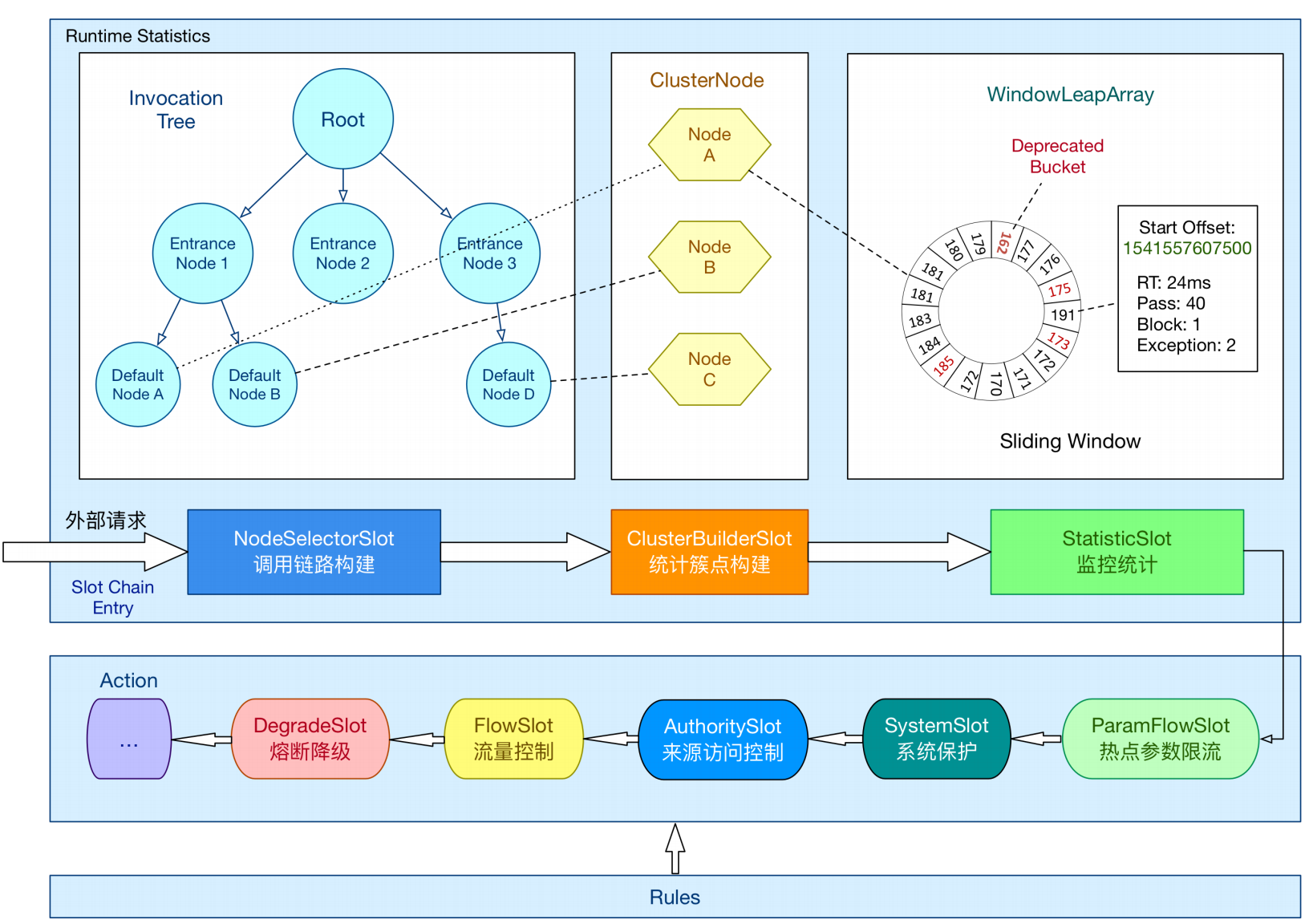

![vue2实现字节流byte[]数组的图片预览](https://img-blog.csdnimg.cn/direct/5d5716c817b54b01b8d7e4ea7e9c9665.png#pic_center)
